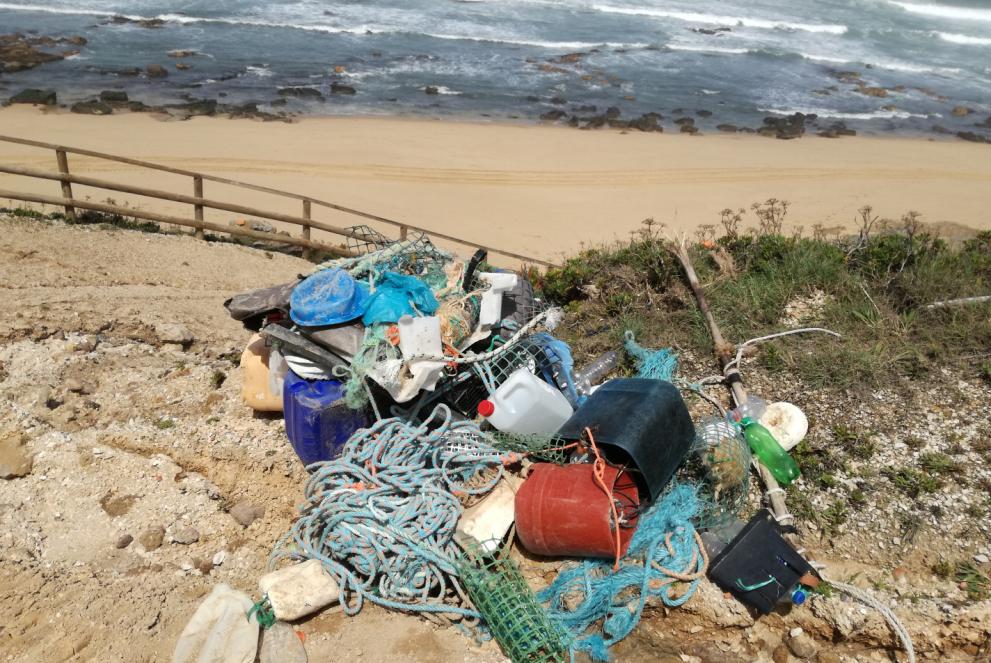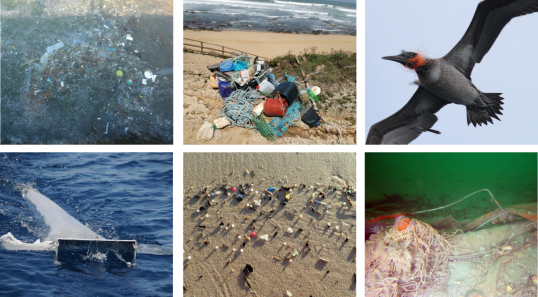
The health and cleanness of our seas is a growing concern in Europe and the world. The ocean currents carry an increasing amount of litter, and it does not stop at country borders.
Finding common approaches to marine litter monitoring is therefore key to understand the impact that it has on our marine and coastline environment and to decide where and how to act first.
The JRC, as co-chair of the Technical Group on Marine Litter, has just released a new edition of the Guidance on Monitoring of Marine Litter in European Seas, first published in 2013. The publication provides recommendations on how to sample, analyse and record marine litter with the aim to make the data comparable and usable across countries.
It gives advice on how to monitor litter objects and particles of different sizes on the coastline, seafloor, floating on the surface, and ingested by animals. It also recommends how to assess the presence of organisms wrapped or trapped in marine litter such as abandoned fishing gear.
Producing consistent and compatible data to protect our seas
EU countries continue to assess the state of their seas under the Marine Strategy Framework Directive (MSFD). Monitoring in a consistent manner is vital, as it will ensure reliable and impartial information to address specific policy questions and concerns.
The new guidance will help national authorities to implement the MSFD and protect the marine environment against harm caused by litter, as urged by Descriptor 10 of the strategy.
But national authorities will not be the only beneficiaries. Other international organisations responsible for managing marine litter will also find it relevant, as it contributes to creating consistent and comparable data to address marine litter concerns in a global setting.
What is new in this edition?
During the last 10 years marine research has developed new knowledge, tools and monitoring methodologies.
The variability of methods, data format and accessibility has proven an obstacle for comparability. Harmonised methods are essential to establish baselines, define threshold values and evaluate trends.
The updated guidance provides recommendations to address this problem. It aims to reduce the differences in the collection, classification and reporting procedures among EU countries, allowing for environmental assessment at regional and European scales.
The new guidelines aim to make a difference in many ways, such as:
- Use of harmonised methods for monitoring marine litter, including plastic litter and microplastics, in the EU and the surrounding marine regions, in line with the requirements of the MSFD and the Commission Decision on Good Environmental Status
- Improving the measurement of marine litter quantities and their impact and trends in the European seas.
- Aiding in the identification of priority actions in the battle against marine litter.
- Supplying detailed monitoring protocols, leading to comparable data on marine litter pollution available through the European Marine Observation and Data Network (EMODnet).
- Providing support for EU policies created with partners around Europe.
- It has been developed by a large scientific community of experts from EU Member States, research institutes, organisations, Regional Sea Conventions and Non-Governmental Organisations.
Background
The Marine Strategy Framework Directive (MSFD) is the EU’s main tool to protect the health of our coasts, seas and ocean. Its goal is to achieve a good environmental status of the EU's marine waters and protect the resource base upon which marine-related economic and social activities depend.
The development of non-legally binding and practical documents on various technical issues of the Directive, such as this recommendation, supports the implementation of the MSFD.
The data will contribute to assess the progress towards the targets of the Marine Strategy Framework Directive, the EU Plastics Strategy and the Zero Pollution Action Plan. Collecting data through EMODnet has been essential to increase access to data. Also other EU legislation, such as against single use plastics and to reduce litter from fisheries, to collect waste from ships, as well as against pollution through microplastic will prove their success when finding less litter pollution in the environment.
The updated monitoring guidance can also be seen as another EU contribution to the ongoing UN negotiations for a global legally binding instrument against plastic pollution, which could include provisions for monitoring plastic pollution in various environmental compartments, including coasts and seas.
The JRC has coordinated the development of this publication within the Technical Group on Marine Litter of the directive, as well as co-authored several chapters and edited the final document. The technical group is co-chaired by the JRC and Spain. The group is composed of EU Member States Experts, DGs, European Environment Agency, Regional Sea Conventions, NGOs and other related experts.
Sources
Details
- Publication date
- 12 December 2023
- Author
- Joint Research Centre
- JRC portfolios





